#Barthélémy Toguo
Text

Barthélémy Toguo (Cameroonian, b. 1967), Nuclear Destiny III, 2015. Acrylic on canvas, 130.0 × 195.0 cm
445 notes
·
View notes
Photo

Barthélémy Toguo (Cameroonian, 1967), The Unity of Life, 2022. Ink on canvas, 200 × 200 cm.
3K notes
·
View notes
Text

The canopy man - 2018
Barthélémy Toguo
46 notes
·
View notes
Text
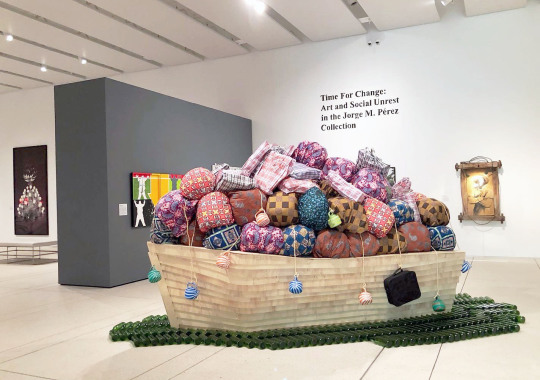
Barthélémy Toguo, “Road to Exile”, 2018. Wooden boat, cloth bundles, glass bottles, and plastic containers
Currently on view at Tampa Museum of Art is Time for Change: Art and Social Unrest in the Jorge M. Pérez Collection. The exhibition highlights art from around the world that focuses on social issues.
From the museum-
“It is enough for the poet to be the bad conscience of his age”, stated Saint-John Perse in his 1960 Nobel Prize acceptance speech. Something similar could be said when artists address the transformations of society. We should not ask for measurable political action when their role is to point out, to render evident, to shake us from indifference. Art may not provide answers, but most of the time it interrogates and proposes uncomfortable issues, almost like rubbing salt in a wound. Artists are seldom celebratory, nor do they usually provide solutions-art’s potency lays in the symbolic efficacy of the actions it proposes more than in the practical effects they entail. Paraphrasing Brazilian poet Ferreira Gullar, “art exists because life is not enough.”
Time for Change is structured around six themes or nuclei: Entangled Histories, Extraction and Flows, Artivism, State Terror, Spatial Politics, and Emancipatory Calls. The sections are organically linked and establish dialogue and correlations among artworks that do not necessarily illustrate an argument nor are they contained by one. Entangled Histories proposes essential questions: how do we remember as a society? Who is forgotten by History, and for what reasons? Extraction and Flows examines displacement of peoples (usually forced), as well as the unequal logic on the territory. Artivism: Art in the Social Sphere focuses on political unrest and public protest on the streets. State Terror signals how protest is countered with repression and violence. The fifth section, Spatial Politics, reflects on modern architecture and its role in creating segregated communities. Lastly, Emancipatory Calls summons to reclaim difference, in the understanding that a more just society can only be built on respect for one’s right to be different.
A comprehensive look at the Jorge M. Pérez Collection reveals a tendency towards art with an interest in social change- art that examines the conflicts and contradictions of contemporary society, art that critically analyzes historical events and reframes them in the present. Many of the 60 works on view, due to their size or complexity have rarely been exhibited and are shown together for the first time in Time for Change.
About the main work pictured above, Barthélémy Toguo’s Road to Exile, from the museum–
In 2018, the Parrish Art Museum in Water Mill, New York hosted Barthélémy Toguo’s first solo exhibition in the United States. While on site at the Parrish he made Road to Exile, a large-scale installation highlighting the plight of refugees, in particular African migrants in search of a better and safer quality of life. The installation features a life-sized wooden boat that rests on glass bottles. A metaphor of the dangerous voyage across the sea, the bottles represent the fragile line between life and death. The boat nearly overflows with bundles wrapped in brightly colored African textiles and serve as stand-ins for the body. In Road to Exile Toguo employs imagery of the boat as a means of escape rather than a vessel for exploration or adventure.
Below are images from the exhibition as well as some information on a few of the works.

Rashid Johnson, “A Place for Black Moses, (2010), bottom right sculpture; and Christopher Myers “How to Name a Famine, a Fire, a Flood”, 2019, left wall piece
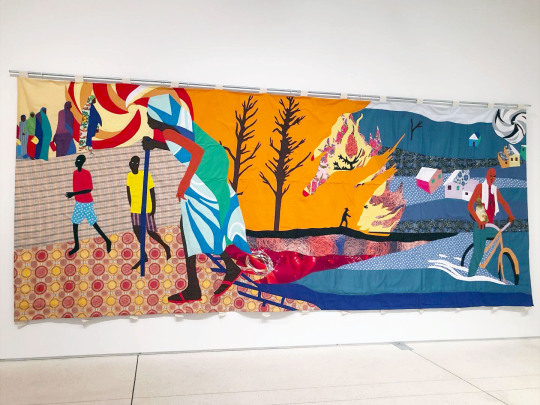
From the museum about the above work-
Storytelling anchors Christopher Myers’ artistic practice. Working in a range of media, he mines history and creates art that links the past to the present. Myers’ tapestries, such as How to Name a Famine, a Fire, a Flood draws on the rich tradition of quilt making as a quiet yet radical form of resistance and protest. The stories depicted center on the effects of globalization on individuals and more specifically, communities of color. In How to Name a Famine, a Fire, a Flood, Myers portrays three different natural disasters linked to climate change. With vivid color and patterned fabric, he illustrates the impact and devastation of these catastrophic events in neighborhoods with minority populations.



Carlos Garaicoa “La habitacion de mi negatividad (The Room of My Negativity)”, 2003, 39 ink and pencil drawings on rice paper and toy train installation
About the above work from the museum-
Carlos Garaicoa works in a variety of media, ranging from installation, photography, and video to performance and public interventions. His early work in the 1990s focused on the urban decay of Havana as result of its political climate and economic strife. La habitacion de mi negatividad (The Room of My Negativity), turns Garaicoa’s lens inward. In this installation, comprised of toy trains and drawings of medical instruments, the artist explores his psyche and subconscious. The train’s engine pulls words that represent Garaicoa’s negative thoughts. Each train is connected to thin red thread that acts as a vein or conduit for the negative thoughts to travel. Arrange in a curved form, the train shapes mimic brain waves or the slink of a snake. Garacoia’s drawings of medical tools serve as mechanisms in which the negatively could be excavated from one’s mind.

Esterio Segura, “La historia se muerde la cola (History Bites its Tail)”, 2015, (statue bottom left); Anamaría Devis, “Infinito (Infinite)”, 2018 (upper right)


Anamaría Devis, “Infinito (Infinite)”, 2018, Ink on paper
About this work from the museum-
Anamaría Devis’ large-scale installation Infinito (Infinite) represents the artist’s study of African history in San Basilio de Palenque, Colombia. Escaped slaves founded Palenque and it was the first free town in the Americas during colonial times. While researching this history, Devis discovered that in this region of Colombia, braided hairstyles worn by Africans served as escape maps. Braid patterns reflected safe points in the area’s topography. This silent form of resistance inspired her to look at other bodily topographies like the characteristics of fingerprints, which also had names associated with cartography such as crossing, island, and fork. Devis then began to create drawings that incorporated footprints, braid patterns, and elements of nature. From the drawings she made stamps and each panel of paper that comprises Infinito (Infinite) is rendered from Devis’ various imprints. The result is an abstract representation of the body and landscape visualized through mapping and codes.

Jonathas de Andrade, “A batalha de todo dia de Dona Luzia, de Tejucupapo (The daily battle of Dona Luzia, from Tejucupapo)”, 2022 Images printed on raw falconboard
About this work from the museum-
Jonathas de Andrade collaborated with the Brazilian theater company Teatro Heroínas de Tejucupapo to create a visual reenactment of the historic 1646 Battle of Tejucupapo. For nearly 25 years, between 1630 and 1654, the Dutch occupied the northeast of Brazil including Tejucupapo, a small community in the city of Goiana. During the Battle of Tejucupapo, a brigade of black and indigenous women forced Dutch soldiers to retreat by arming themselves with household and farm objects. The Teatro Heroínas de Teiucupapo commemorates this female-led rebellion each April by restaging the battle with local actors.
Artist Jonathas de Andrade celebrates the power and courage of Tejucupapo’s women with his large-scale photographic installation A batalha do todo dia de Tejucupapo (The Battle of Tejucupapo). The work on this wall, A batalha de todo dia de Dona Luzia, de Tejucupapo (The daily battle of Dona Luzia, from Tejucupapo), presents everyday objects from the home of one of the women participating in Teatro Heroínas de Tejucupapo. This inventory explores the daily struggles, as well as strength, of Brazil’s black and indigenous women that have spanned centuries.
This exhibition will close on Sunday, 8/27/23.
#Anamaría Devis#Art#Art Installation#Art Shows#Barthélémy Toguo#Carlos Garaicoa#Christopher Myers#Drawing#Esterio Segura#Florida Art Shows#Installation Art#Jonathas de Adrade#Mixed Media#MIxed Media Art#Painting#Parrish Art Museum#Photography#Political Art#Rashid Johnson#Sculpture#Social Change#Tampa Art#Tampa Art Shows#Tampa Museum of Art
8 notes
·
View notes
Photo

La route de l'exil - Barthélémy Toguo, Cameroun
8 notes
·
View notes
Photo

“Gaïa" encre et acrylique de Barthélémy Toguo (2020) oeuvre installée dans les lambris de l'Hôtel Biron (1728), Musée Rodin, Paris, février 2023.
227 notes
·
View notes
Text

"Talking to the Moon I", Barthélémy Toguo, 2013. Watercolour on paper mounted on canvas.
12 notes
·
View notes
Text
Peter Gabriel announces his first album of new material in over 20 years
i/o releases on 1 December, 2023

i/o is 12 tracks of grace, gravity and great beauty that provide welcome confirmation of not only Peter’s ongoing ability to write stop-you-in-your-tracks songs but also of that thrilling voice, still perfectly, delightfully intact. Throughout the album the intelligent and thoughtful – often thought-provoking – songs tackle life and the universe. Our connection to the world around us – ‘I’m just a part of everything’ Peter sings on title track i/o – is a recurring motif, but so too the passing of time, mortality and grief, alongside such themes as injustice, surveillance and the roots of terrorism. But this is not a solemn record. While reflective, the mood is never despondent; i/o is musically adventurous, often joyous and ultimately full of hope, topped off as it is, by the rousingly optimistic closing song, Live and Let Live.
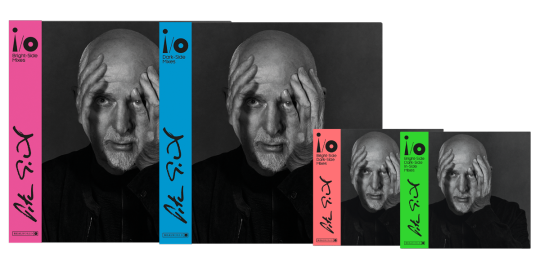
Recorded mostly at Real World Studios and Peter’s home studio, the lengthy gestation of i/o means it has a sizeable cast list. Peter has kept his trusty inner circle of musicians close to hand, which means guitarist David Rhodes, bassist Tony Levin and drummer Manu Katché are sterling presences throughout. Several songs bear the fingerprints of long-time associate Brian Eno, whilst there are notable contributions from Richard Russell, pianist Tom Cawley, trumpeters Josh Shpak and Paolo Fresu, cellist Linnea Olsson and keyboard player Don E. Peter’s daughter Melanie contributes warm backing vocals, as does Ríoghnach Connolly of The Breath, while Real World regulars Richard Chappell, Oli Jacobs, Katie May and Richard Evans collectively provide programming and play various instruments. Soweto Gospel Choir and Swedish all-male choir Oprhei Drängar lend their magnificent harmonies to a selection of tracks, and the mass strings of the New Blood Orchestra, led by John Metcalfe, both soothe and soar.

Renowned for being a boundary-pushing artist, i/o is not simply a collection of a dozen songs. All 12 tracks are subject to two stereo mixes: the Bright-Side Mix, handled by Mark ‘Spike’ Stent, and the Dark-Side Mix, as reshaped by Tchad Blake. “We have two of the greatest mixers in the world in Tchad and Spike and they definitely bring different characters to the songs. Tchad is very much a sculptor building a journey with sound and drama, Spike loves sound and assembling these pictures, so he’s more of a painter.” Both versions are included on the double-CD package, and are also available separately as double vinyl albums. And that’s not all. A third version – the In-Side Mix, in Dolby Atmos, comes courtesy of Hans-Martin Buff “doing a wonderful job generating these much more three-dimensional mixes” and is included in three-disc set, including Blu-ray.

Continuing the idea developed for Peter’s US and UP albums, he has again invited a range of visual artists to contribute a piece of art to accompany the music and each of i/o’s 12 songs were handed to a world-renowned artist to create an accompanying work, whether paint, photography, sculpture or even Plasticine. The dozen artists make an exceedingly impressive team of collaborators: Ai Weiwei, Nick Cave, Olafur Eliasson, Henry Hudson, Annette Messager, Antony Micallef, David Moreno, Cornelia Parker, Megan Rooney, Tim Shaw, David Spriggs and Barthélémy Toguo.
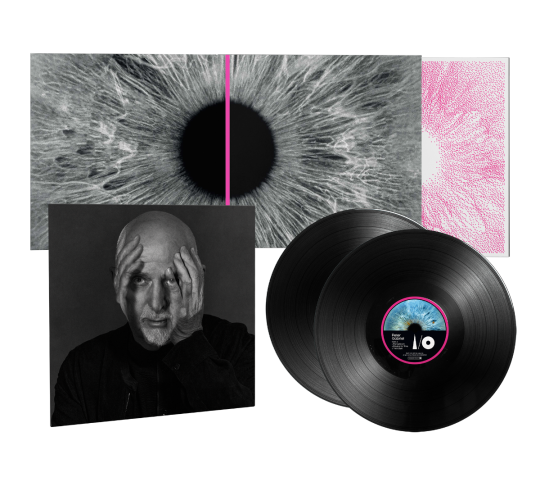
Another visual link with Peter’s past work is the cover shot. Taken by photographer Nadav Kander, it echoes with the covers of his earlier albums, always present but, with the exception of So, intriguingly obscured or manipulated.

These echoes of the past might resonate, but i/o is fundamentally an album of – and for – the here and now. Many of its themes may be timeless, but they’re also warnings that we’re living on borrowed time, both as a planet and as individuals.
(Source: Peter Gabriel's mailing list)
3 notes
·
View notes
Text

Barthélémy Toguo (Cameroonian, b. 1967), I am flying, Jack !, 2018. Acrylic and watercolour on canvas, 100 x 100 cm
332 notes
·
View notes
Photo
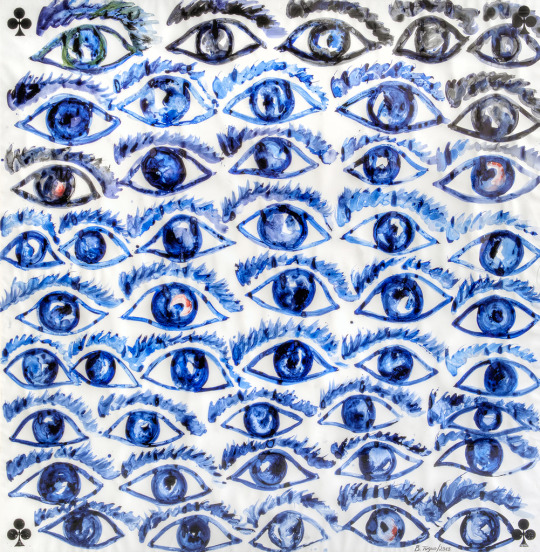
Barthélémy Toguo (Cameroonian, 1967), Talking to the Moon I, 2013. Watercolour on paper mounted on canvas, 250 x 240 cm.
2K notes
·
View notes
Text

ROAD FOR EXILE par Barthélémy TOGUO.
Nantes.
4 notes
·
View notes
Text
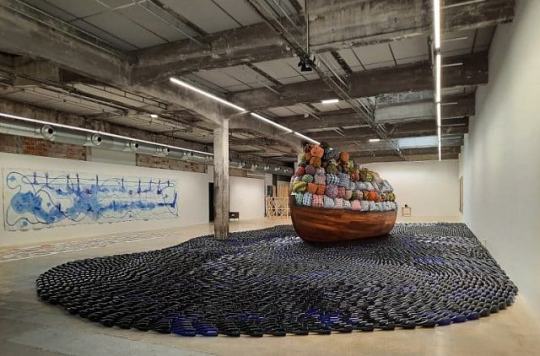
Barthélémy Toguo | Habiter la Terre https://www.artlimited.net/agenda/barthelemy-toguo-habiter-la-terre-exposition-hab-galerie-nantes/fr/7585531
1 note
·
View note
Text
SUDARSHAN LIVE KHABAR LOBBY
Sudarshanlive: 21/03/2023, international news updates, Report by – unesco,
Barthélémy Toguo expresses himself through his art, diving into the problems and inequalities of our world and giving injustice the criticism it deserves. He brings attention to the importance of the fight for human rights and raises provocative questions about humanity, exploring themes such as the status of foreigners,…

View On WordPress
0 notes
Photo

“Gaïa" encre et acrylique de Barthélémy Toguo (2020) oeuvre installée dans les lambris de l'Hôtel Biron (1728), Musée Rodin, Paris, février 2023.
#expos#peinture#deco#mur#miroir#sculpture#Toguo#Rodin#observateur#HotelBiron#Aubert#Peyrenc#Moras#MuseeRodin
0 notes
Photo

Barthélémy TOGUO : le Pilier des migrants disparus. #lelouvre #lelouvreparis #expositionleschoses #barthelemytoguo #lepilierdesmigrantsdisparus #balots #matdebateau #instapic #photoofthedays #parismaville (à Louvre) https://www.instagram.com/p/CmCIDUfKGsn/?igshid=NGJjMDIxMWI=
#lelouvre#lelouvreparis#expositionleschoses#barthelemytoguo#lepilierdesmigrantsdisparus#balots#matdebateau#instapic#photoofthedays#parismaville
0 notes
